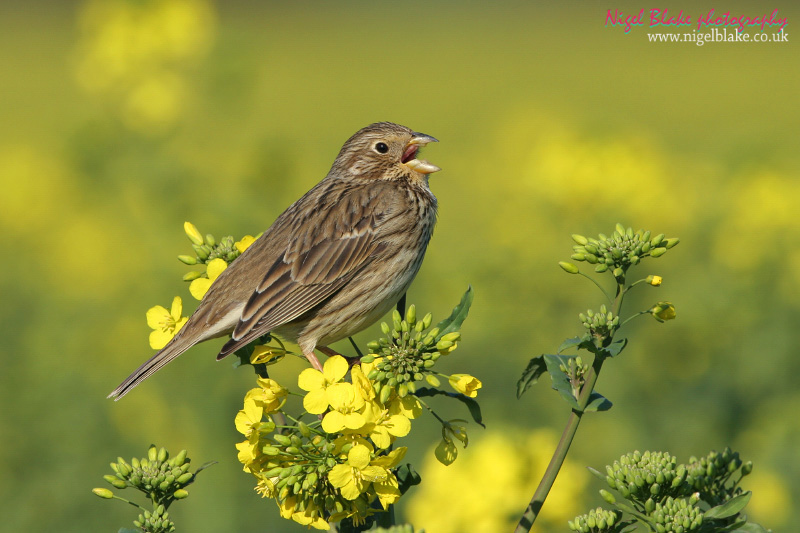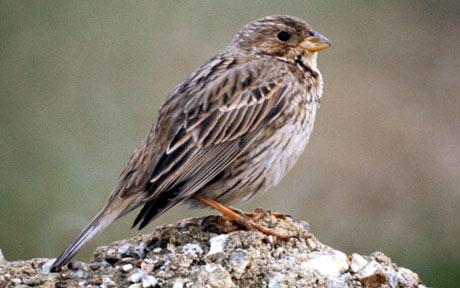
Miliaria calandra
TAXONOMY
Emberiza calandra Linnaeus, 1758, Sweden. Several subspecies
have been described, but geographic variation is slight.
OTHER COMMON NAMES
French: Bruant proyer; German: Grauammer; Spanish:
Triguero.
PHYSICAL CHARACTERISTICS
7 in (18 cm); 1.2–1.75 oz (35–50 g). A large bunting with a
stout bill. Sexes are alike in color, but males are larger than
females. They are uniformly brownish and streaked with
brown, with underparts paler than upperparts; some have a
blackish spot on the breast.
DISTRIBUTION
Breeds from Britain, southern Sweden, and Lithuania southeast
across Russia to the Caspian Sea and south through all of
eastern Europe and the Mediterranean islands to the Canary
Islands, North Africa, Syria, northern Iraq, Iran, northern
Afghanistan and Tajikistan, and western Tianshan, China.
Winters in the breeding range south to Israel and southern
Iraq and Iran.
HABITAT
Live in open country with few bushes, especially in farmlands.
BEHAVIOR
In the breeding season, males advertise by singing. They often
give a flight song with their legs dangling in a distinctive way
and their wings uplifted. They flock outside of the breeding
season, often with other seed-eating birds; flocks start to form
after the end of the breeding season.
FEEDING ECOLOGY AND DIET
Feed on the ground in fields, damp meadows, and in short
grass. In the breeding season they take animal material (arthropods,
snails, earthworms) and seeds, and in winter they eat
seeds (especially cereals).
REPRODUCTIVE BIOLOGY
Mostly monogamous, but in some populations about 20% of
the males are polygynous. The nest is placed on the ground in
thick tangled grass or in a shrub or depression. They lay two
to seven (usually four to five) eggs. Incubation takes 12–14
days, and young fledge in 9–13 days. The female does most of
the feeding, but males with more than one mate tend to feed
more than males in a monogamous pair.
CONSERVATION STATUS
Not threatened, though populations of corn buntings have declined
in most places in Europe, due mainly to changes in agricultural
practices.
SIGNIFICANCE TO HUMANS
None known.
Other popular Animals
Photo Gallery of - Corn bunting




 Animalia Life
Animalia Life